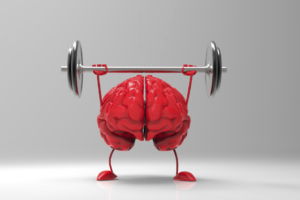Birth Defects And What Parents Need To Know

Birth defects are abnormalities in structure or functionality that occur at birth. They can affect the body’s normal physiological function or the physical appearance of any body part. They may be internal, for example, congenital heart defects, or visible externally, e.g., cleft lip or palate. Birth defects range in severity, causing mild to severe health conditions.
Around 1 in 33 babies in the United States are born with birth defects and are responsible for 1 in 5 infant deaths. Birth defects can develop at any time during pregnancy, and most develop during the first trimester (first three months). There is usually no family history in most babies born with birth defects. Based on the extent and severity, some birth defects may require urgent medical and surgical care, while others can be treated later in life.
Example of birth defects:
Cerebral Palsy: Cerebral palsy is caused by damage to the baby’s developing brain resulting in loss of muscle control. The abnormal development can begin before, during, or after birth. Around 85-90% of cerebral palsies are congenital. The major risk factors include multiple births, infections during pregnancy, low birth weight, and premature birth.
There are five different cerebral palsy types – spastic, mixed, athetoid, hypotonic, and ataxic. They affect the motor skills of the baby. The movement defects can appear in any part of the limbs depending on the area of the brain involved.
- Spastic cerebral palsy is the most common type and damages the brain’s primary motor cortex, causing difficulties in voluntary movements.
- Athetoid cerebral palsy affects the basal ganglia and cerebellum. It results in a combination of stiffened and loose muscle resulting in floppiness and feeding issues in the baby.
- Ataxic Cerebral Palsy affects the cerebellum, resulting in loss of coordination of physical movements in the baby with speech difficulty and tremors.
- Hypotonic cerebral palsy affects the cerebellum and is characterized by low muscle tone in the baby with difficulty achieving developmental milestones, including crawling, standing, and walking.
- Mixed cerebral palsy affects multiple locations in the brain and shows the symptoms of two or more types of cerebral palsy.
Cerebral palsy can present as either monoplegia (affecting only one limb), diplegia (affecting two limbs), triplegia (affecting three limbs), quadriplegia (affecting four limbs), or hemiplegia(affects one side of the entire body)
Causes and risk factors:
Most birth defects have no known causes. It includes heart defects, club foot, cleft lip, or palate. Other causes include low socioeconomic status, inadequate diet, nutritional deficiencies in the mother (e.g., folate deficiency), radiation exposure, infection in the mother(rubella, syphilis), any illness in the mother(maternal diabetes), or certain drugs (alcohol, phenytoin) can also result in birth defects. Genetic abnormalities can be responsible for a minority of defects, including Down’s syndrome or cystic fibrosis. Consanguinity and increased age of the mother can also raise the risk of birth defects in babies.
Prevention of birth defects:
A few preventive measures are:
- A healthy, well-balanced diet is required for pregnant ladies with an adequate intake of minerals and vitamins.
- Folic acid is required for the normal development of the brain and nervous system.
- Control of prior illnesses in mothers, e.g., diabetes.
- Avoidance of alcohol and tobacco during pregnancy.
- Vaccination and screening for infections in mothers.
- Eliminating radiation exposure and other hazardous environmental substances.
- Limitation to travel of pregnant women to areas where the congenital infection rates are too high.
- Regular medical check-ups and an anomaly scan during pregnancy.
Screening for birth defects:
Birth defects can be diagnosed during pregnancy or after birth.
A screening or diagnostic test can be carried out during pregnancy to look for a birth defect. Ultrasound is the most used screening tool for birth defects. Another diagnostic test known as amniocentesis can also be used for genetic birth defects. Amniocentesis involves testing amniotic fluid from the mother’s belly. Your doctor might also recommend a fetal echocardiogram to check for any heart defects in the baby.
Some birth defects present with external malformations and can easily be diagnosed by a health practitioner on routine medical examination after birth, e.g., club foot, cleft palate, or neural tube defects.
Some internal birth defects may require further testing after birth. Routine screening tests, including blood tests, and heart and hearing screening tests, are carried out in newborns to prevent any missed diagnosis of birth defects.
Treatment:
Depending on the type and severity of the disease, birth defects might require urgent medical or surgical intervention. In case of significant conditions, urgent referral of the baby to a neonatologist or pediatrician should be done.
Conclusion:
Most babies with birth defects require lifelong support in speech therapy, physical therapy, occupational therapy, and support therapy. They are the major cause of morbidity and death in babies. Hence special attention should be paid to the prevention of such conditions.



































No comments